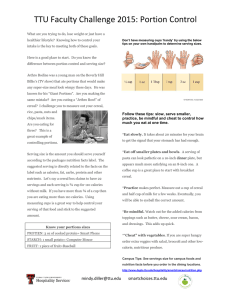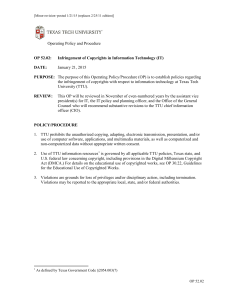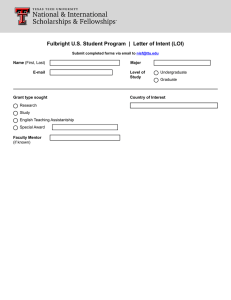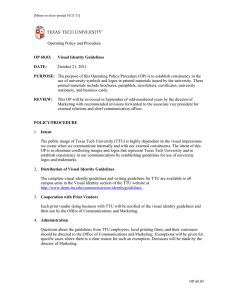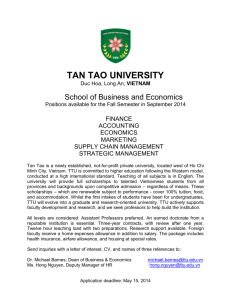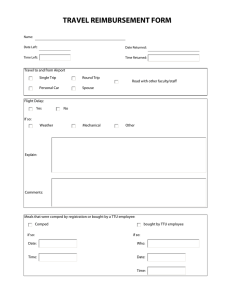TTU Faculty Fitness Challenge 2015
advertisement
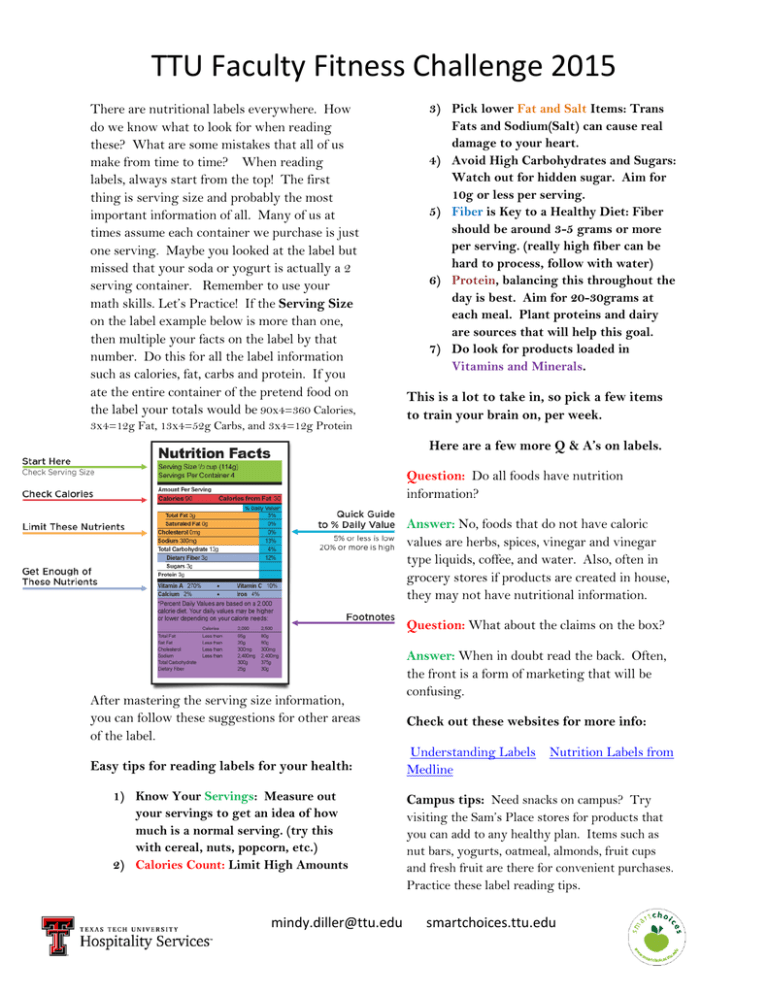
TTU Faculty Fitness Challenge 2015 There are nutritional labels everywhere. How do we know what to look for when reading these? What are some mistakes that all of us make from time to time? When reading labels, always start from the top! The first thing is serving size and probably the most important information of all. Many of us at times assume each container we purchase is just one serving. Maybe you looked at the label but missed that your soda or yogurt is actually a 2 serving container. Remember to use your math skills. Let’s Practice! If the Serving Size on the label example below is more than one, then multiple your facts on the label by that number. Do this for all the label information such as calories, fat, carbs and protein. If you ate the entire container of the pretend food on the label your totals would be 90x4=360 Calories, 3x4=12g Fat, 13x4=52g Carbs, and 3x4=12g Protein 3) Pick lower Fat and Salt Items: Trans Fats and Sodium(Salt) can cause real damage to your heart. 4) Avoid High Carbohydrates and Sugars: Watch out for hidden sugar. Aim for 10g or less per serving. 5) Fiber is Key to a Healthy Diet: Fiber should be around 3-5 grams or more per serving. (really high fiber can be hard to process, follow with water) 6) Protein, balancing this throughout the day is best. Aim for 20-30grams at each meal. Plant proteins and dairy are sources that will help this goal. 7) Do look for products loaded in Vitamins and Minerals. This is a lot to take in, so pick a few items to train your brain on, per week. Here are a few more Q & A’s on labels. Question: Do all foods have nutrition information? Answer: No, foods that do not have caloric values are herbs, spices, vinegar and vinegar type liquids, coffee, and water. Also, often in grocery stores if products are created in house, they may not have nutritional information. Question: What about the claims on the box? After mastering the serving size information, you can follow these suggestions for other areas of the label. Easy tips for reading labels for your health: 1) Know Your Servings: Measure out your servings to get an idea of how much is a normal serving. (try this with cereal, nuts, popcorn, etc.) 2) Calories Count: Limit High Amounts mindy.diller@ttu.edu Answer: When in doubt read the back. Often, the front is a form of marketing that will be confusing. Check out these websites for more info: Understanding Labels Nutrition Labels from Medline Campus tips: Need snacks on campus? Try visiting the Sam’s Place stores for products that you can add to any healthy plan. Items such as nut bars, yogurts, oatmeal, almonds, fruit cups and fresh fruit are there for convenient purchases. Practice these label reading tips. smartchoices.ttu.edu TTU Faculty Fitness Challenge 2015 MORE TIPS ON LABEL READING: mindy.diller@ttu.edu smartchoices.ttu.edu
